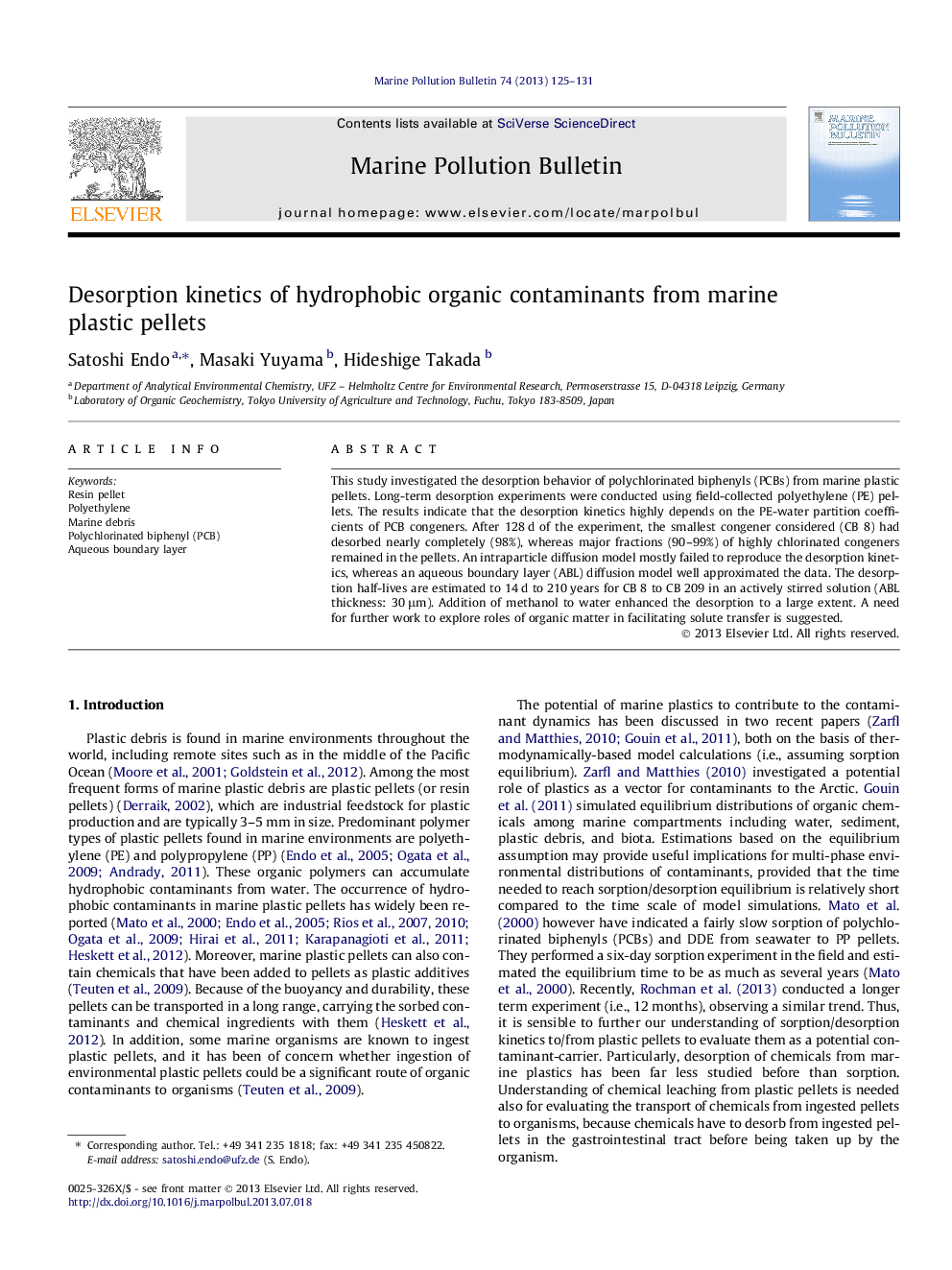| کد مقاله | کد نشریه | سال انتشار | مقاله انگلیسی | نسخه تمام متن |
|---|---|---|---|---|
| 6359632 | 1315642 | 2013 | 7 صفحه PDF | دانلود رایگان |
- Desorption of polychlorinated biphenyls from polyethylene pellets was monitored.
- The fraction desorbed within 128Â d varied substantially across congeners (1-98%).
- Desorption kinetics highly depends on the polyethylene-water partition coefficient.
- The aqueous boundary layer diffusion model reproduces desorption data well.
- Half-lives are estimated to weeks to centuries if no facilitated transfer exists.
This study investigated the desorption behavior of polychlorinated biphenyls (PCBs) from marine plastic pellets. Long-term desorption experiments were conducted using field-collected polyethylene (PE) pellets. The results indicate that the desorption kinetics highly depends on the PE-water partition coefficients of PCB congeners. After 128 d of the experiment, the smallest congener considered (CB 8) had desorbed nearly completely (98%), whereas major fractions (90-99%) of highly chlorinated congeners remained in the pellets. An intraparticle diffusion model mostly failed to reproduce the desorption kinetics, whereas an aqueous boundary layer (ABL) diffusion model well approximated the data. The desorption half-lives are estimated to 14 d to 210 years for CB 8 to CB 209 in an actively stirred solution (ABL thickness: 30 μm). Addition of methanol to water enhanced the desorption to a large extent. A need for further work to explore roles of organic matter in facilitating solute transfer is suggested.
Journal: Marine Pollution Bulletin - Volume 74, Issue 1, 15 September 2013, Pages 125-131
